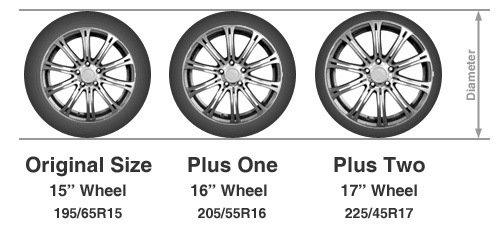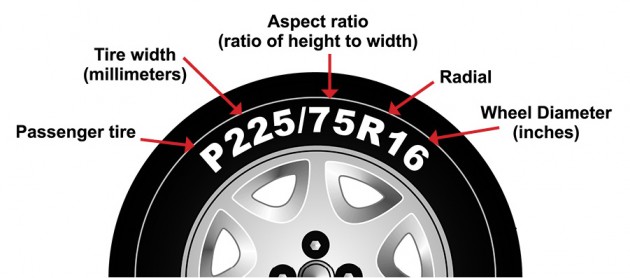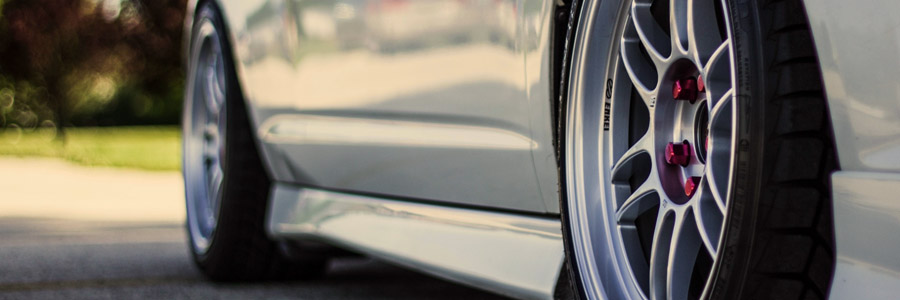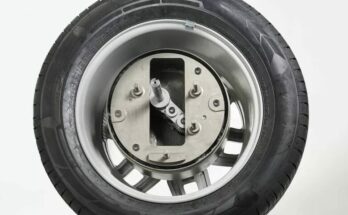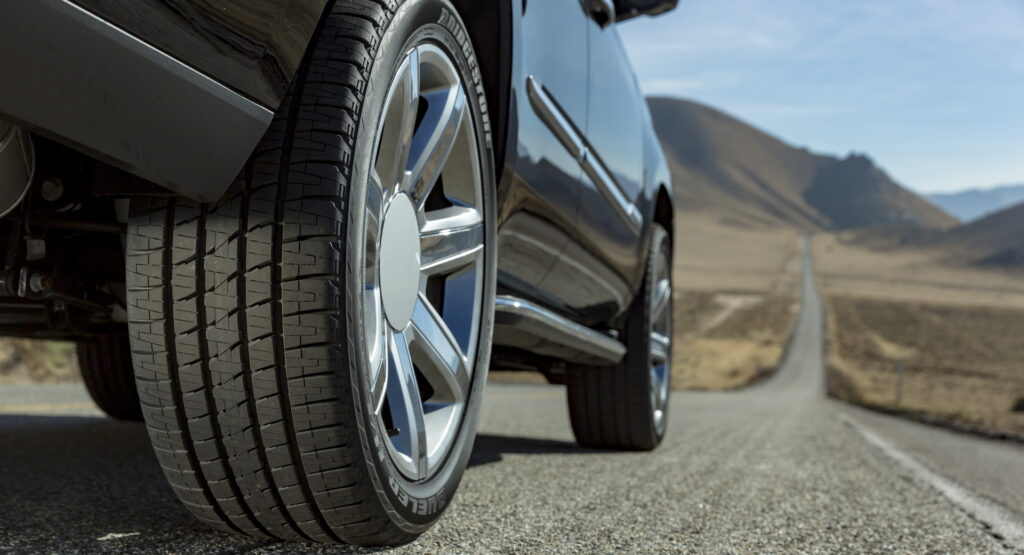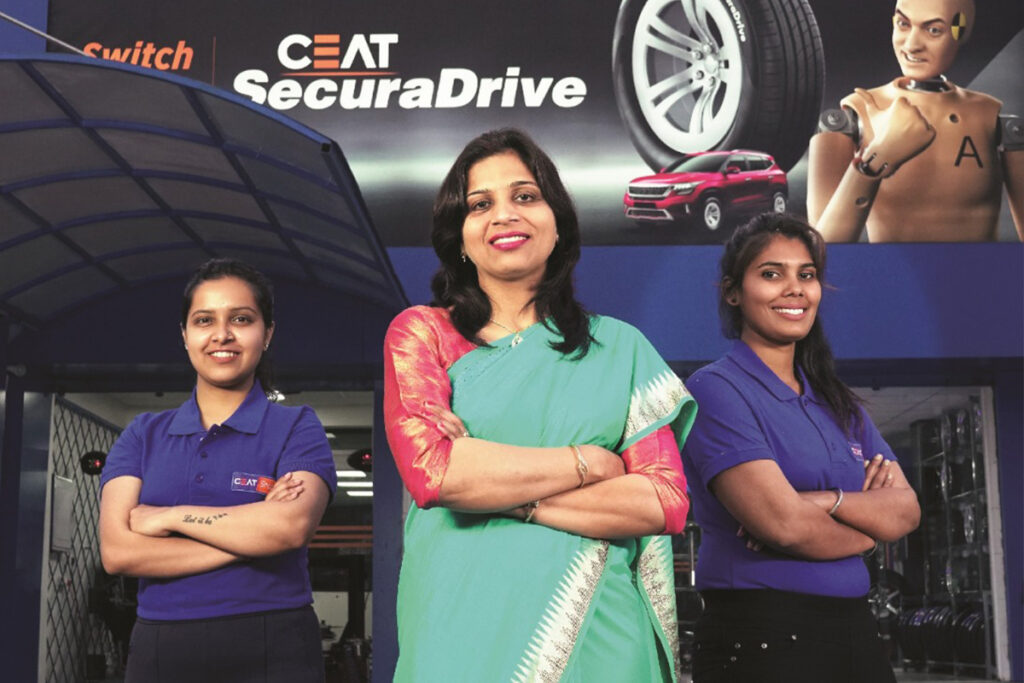Plus sizing is considered a popular trend among car enthusiasts. It is the practice of replacing an automotive wheel with one of a larger diameter fitted with a new tire of lower aspect ratio so that the new tire has the same diameter and circumference as the original tire.
Adding inches to the wheel diameter for wider, low aspect ratio tires can increase your car’s performance capabilities including handling and stability. Some people will also plus size for the appearance, as a larger wheel and tire will fill up the wheel well of the car thus enhancing the looks of the vehicle.
Related: Beginner’s Guide: How To Read A Tire Sidewall
In simplest terms, plus sizing is when you increase the size of your tires and/or wheels from the original size put on the vehicle when manufactured. The number following the ‘plus’ describes the number of inches added to the diameter of the rim, such as Plus Zero, Plus One etc..
Plus Zero
If the wheel remains the same and only the width is increased it is called ‘Plus Zero’. For example, installing 185/65 tires replacing the original 175/70 on the same 14-inch rim.
- This up sizing increase the section width and lower the aspect ratio while retaining the wheel diameter.
- This replacement tire increases the contact area and lowers the tread profile for improved traction and quicker response.
Plus One
If the wheel size is increased by one inch it is ‘Plus One’. This sizing mounts tires with an increased section width and a lower aspect ratio on wheels of a larger diameter. A Plus One fitment for a car with 15-inch original equipment wheels would use 16-inch wheels. As a general rule of thumb, Plus One sizing:
- Increases section width by 10 mm.
- Decreases aspect ratio by 10 points.
- Increases rim diameter by 1 inch.
Plus Two
If the wheel size is increased by two inches it is called ‘Plus Two’. For example, a plus two fitment for a car with 15-inch original equipment wheels and tires would be 17-inch wheels and tires. The Plus Two Sizing:
- Increases section width by 20 mm.
- Decreases aspect ratio by 20 points.
- Increases rim diameter by 2 inches.
Plus Three
If the wheel size is increased by three inches it is ‘Plus Three’. For example, a plus two fitment for a car with 15-inch original equipment wheels and tires would be 18-inch wheels and tires. As a general rule of thumb, Plus Three Sizing:
- Increases section width by 30 mm.
- Decreases aspect ratio by 30 points.
- Increases rim diameter by 3 inches.
Always remember that changing to a wider tire requires reducing the aspect ratio (the second number in the sequence of numbers that describes the tire’s size). Since the aspect ratio is a percentage which is used to calculate the height of the tire’s sidewall, if follows that if a larger number is used for the width, a smaller number must be substituted if the final result is to remain the same, and that’s the objective of Plus sizing.
Related: Importance Of Correct Tire Pressure
However do consider the advantages & disadvantages of this practice before you plus size!
Advantages
- Larger tires improve handling and cornering, due to wider tread faces and stiffer sidewalls.
- Wider tires may decrease braking distances on dry road surfaces.
- Wider tires may also increase acceleration, especially in very powerful/ modified vehicles since ordinary tires can spin at their own place due to less traction.
- Larger wheels with lower profile tires are also aesthetically desirable.
Disadvantages
- Larger and wider wheels increase fuel consumption as your vehicle will require more effort to move around due to a greater contact patch.
- A larger contact patch can increase the time taken for the steering to return to center after taking a sharp turn.
- Larger and wider wheels may also decrease acceleration on normal passenger vehicles with smaller engines.
- Larger wheels typically cost more. Wider tires are more expensive because they are less common, and there is less competition between brands.
- Lower profile tires tend to have stiffer sidewalls, which might decrease riding comfort.
- Low profile tires are likely to sustain more damage to tires and wheel rims when run on bad & broken roads encountering debris and potholes.

A computer animation professional with over 23 years of industry experience having served in leading organizations, TV channels & production facilities in Pakistan. An avid car enthusiast and petrolhead with an affection to deliver quality content to help shape opinions. Formerly written for PakWheels as well as major publications including Dawn. Founder of CarSpiritPK.com

